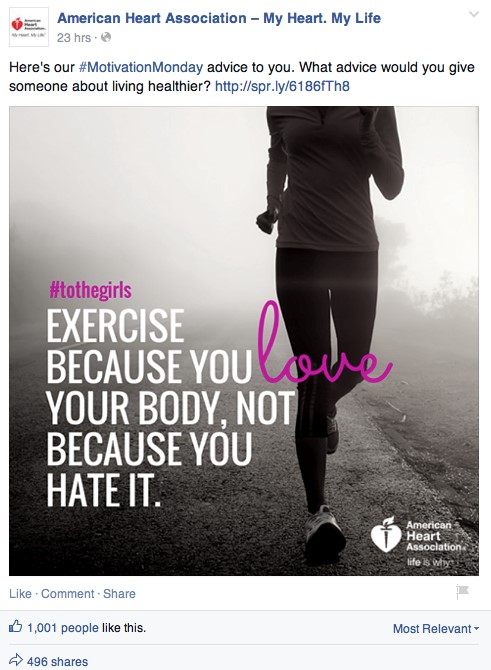Knowing Your Audience: Formative Research for Healthcare Organizations
 Standing out in the sea of voices that exists on social media can be hard enough as it is, and it becomes even harder when you are trying to market a health behavior or idea that requires people to think, act or change. Finding out what makes your viewers tick is especially important in these situations, and conducting effective formative research is a great way to get close and comfy with your target audience.
Standing out in the sea of voices that exists on social media can be hard enough as it is, and it becomes even harder when you are trying to market a health behavior or idea that requires people to think, act or change. Finding out what makes your viewers tick is especially important in these situations, and conducting effective formative research is a great way to get close and comfy with your target audience.
Essentially, social marketing applies traditional marketing tactics to social issues. As a healthcare organization or awareness campaign, you most likely are not only promoting your services, but also a particular health behavior. Getting someone to buy a new iPhone is not that hard, but convincing them to exercise five days a week is something else entirely. And it’s not that surprising—people don’t want to change.

For this reason, you have to be all the more savvy. How? The best comedians will tell you that the key to successfully hitting a punch line is to know your audience.
It’s the same with social marketing. Even with a glamorous campaign or fancy graphic, a message might be lost in translation if it does not resonate with the intended audience.
“Ok, ok, so I need to know my audience. But how?”
Formative research typically takes place in two stages: preproduction research and production message testing. In other words, the stages include things that happen before a message/campaign is designed and things that take place after the message has already been disseminated.
Traditionally, preproduction research consists of baseline surveys, questionnaires, focus groups or interviews.
“So how does that translate to social media?”
An article from Strategic Business Insights supports that the footprints people leave behind on social media can be useful in gathering information from people traditionally hard to reach. Some even argue that using social media for audience assessment is more beneficial than a traditional focus group for many reasons, including the large sample size availability, the ability to act impromptu and the lessening of anxiety that participants might have talking with strangers face-to-face.
You could go the traditional route and give surveys or questionnaires to members of your target audience. Or you might go through outside sources/surveys that do the legwork for you and can gather useful data about consumers.
There are also other ways to observe your audience. Social Crawlytics is a useful tool that can analyze the social shares of any URL content. Not only does it highlight the most shared posts, but it can show you exactly where your audience is most active and what networks they are sharing to the most. You could use engines like BuzzSumo to get to know what your audience is talking about. For example, with this site you can search “exercise Charleston” and BuzzSumo will pull up a numerical value of the most shared content in that category.
“Ok, I got a good feel for my audience and created my campaign. Now what?”
Evaluating your messages at milestone checkpoints allows for your campaign to continuously improve. Enter production message testing!
One way to see if your campaign is working is to tackle analytics. SumAll allows you to easily compare all of your sites in one report, and Hootsuite offers a variety of services that help prove to your boss that your campaign is working. And, as we recently learned from Elizabeth, most social media sites have their own insights that you can use to gauge what is working with your audience and what you should trash.
But perhaps most importantly, you have to be willing to tweak and improve your current message/campaign if it’s not working.
For example, the American Heart Association seems to have effectively updated their strategy based on how their audience engages. Check out these Facebook posts from 2012, a time during which American Heart posted mostly text-based posts with very little images:
118 likes and 16 comments; not too shabby.
But that pales in comparison to this post from 2015:

1001 likes! Almost 500 shares! Their applause and amplification rates have more than doubled. Granted, their fan base has probably grown in that three year span. But still, scrolling through their Facebook page, it becomes apparent that they have shifted to almost exclusively posting pictures or videos instead of simple status updates. They saw what their audience liked to share and improved based on that feedback.
In sum, here are three ways to tackle social marketing and best “sell” your idea, belief or behavior:
1. Get super cozy with your audience by conducting effective preproduction research.
2. Implement milestone “checkpoints” through production message testing by utilizing analytics and insights to assess if results align with organizational goals.
3. Adjust. What’s the point of knowing what your audience likes if you’re not going to give it to them?
Three cheers in advance to your campaign nailing the punch line!
Carlie Mills—Content Creator



